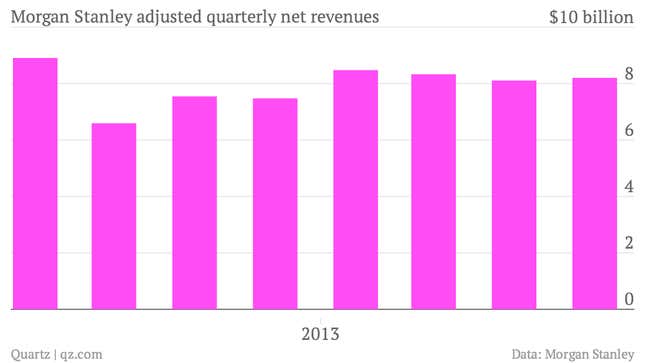
The numbers: Messy. Results suffered because the firm set aside $1.2 billion in reserves to pay for litigation related to financial crisis-era mortgage bonds. Those legal costs and an accounting adjustment muddied an otherwise good performance for the firm. Revenues of $7.8 billion were up 11% from a year ago. That’s good a thing. But in reality, accounting for the legal expenses and other charges, fourth quarter profits fell 71 percent from $192 million,or 7 cents a share, compared to $661 million, or 33 cents a year earlier.
The takeaway: Morgan Stanley may be the biggest question mark on Wall Street. A global financial institution run by Australian-born James Gorman, the firm is the smallest of the big banks. As a result, it’s considered the most vulnerable to big swings in financial markets. To insulate Morgan Stanley from such swoons, Gorman is trying to cut-down on risky trading at the firm, particularly in its fixed-income unit. Morgan Stanley’s Value-at-Risk (VaR), a metric used to demonstrate how much money the firm can lose in a day of trading, was down 35% to $51 million in the fourth quarter of 2013. One year ago, it was $78 million.
What’s interesting: A big bright sport for the bank is its wealth management unit. Morgan Stanley bought the the business, then known as Smith Barney, from Citigroup during the financial crisis. The brokerage unit has been generating profit margins, a measure of return, of nearly 20%.
